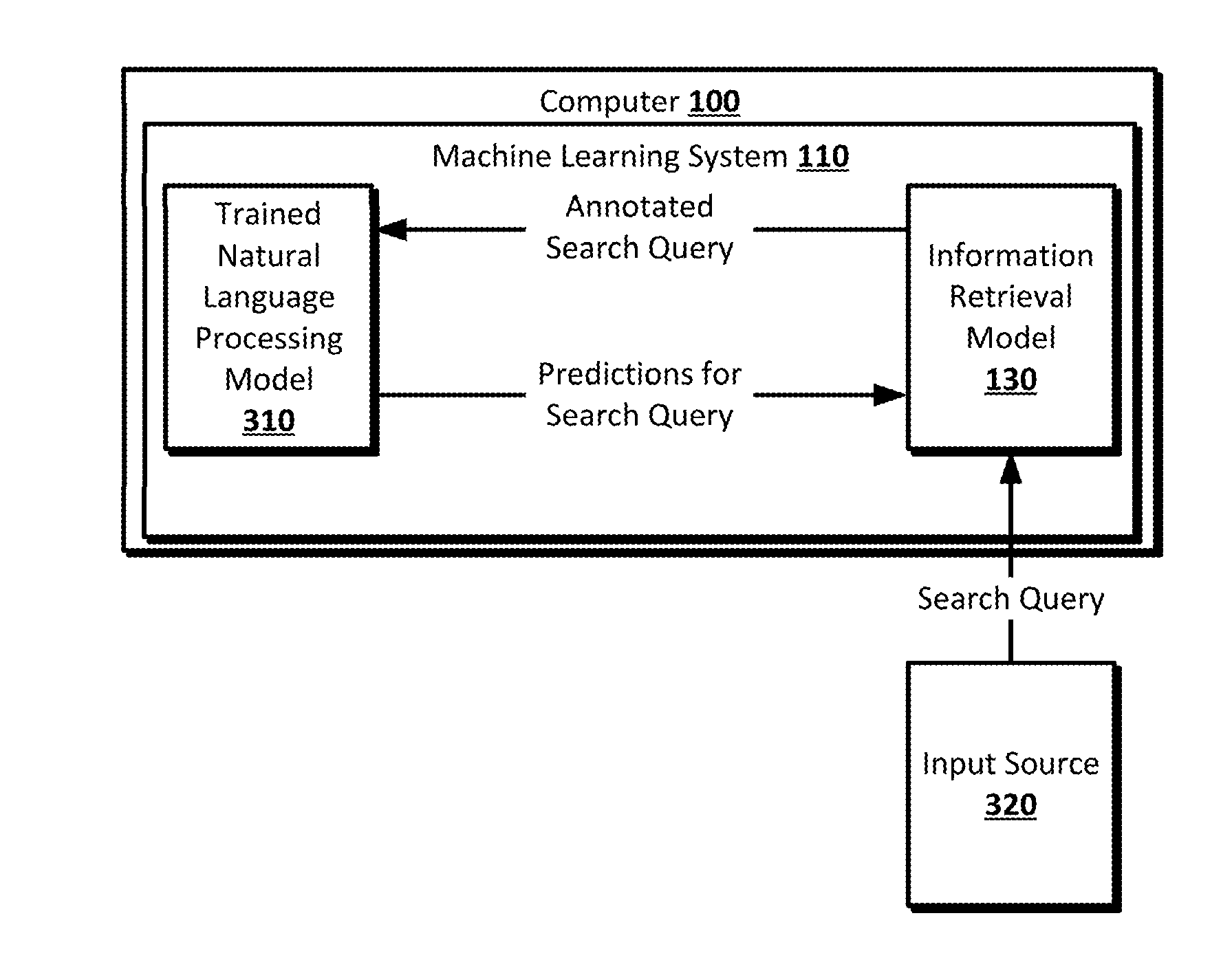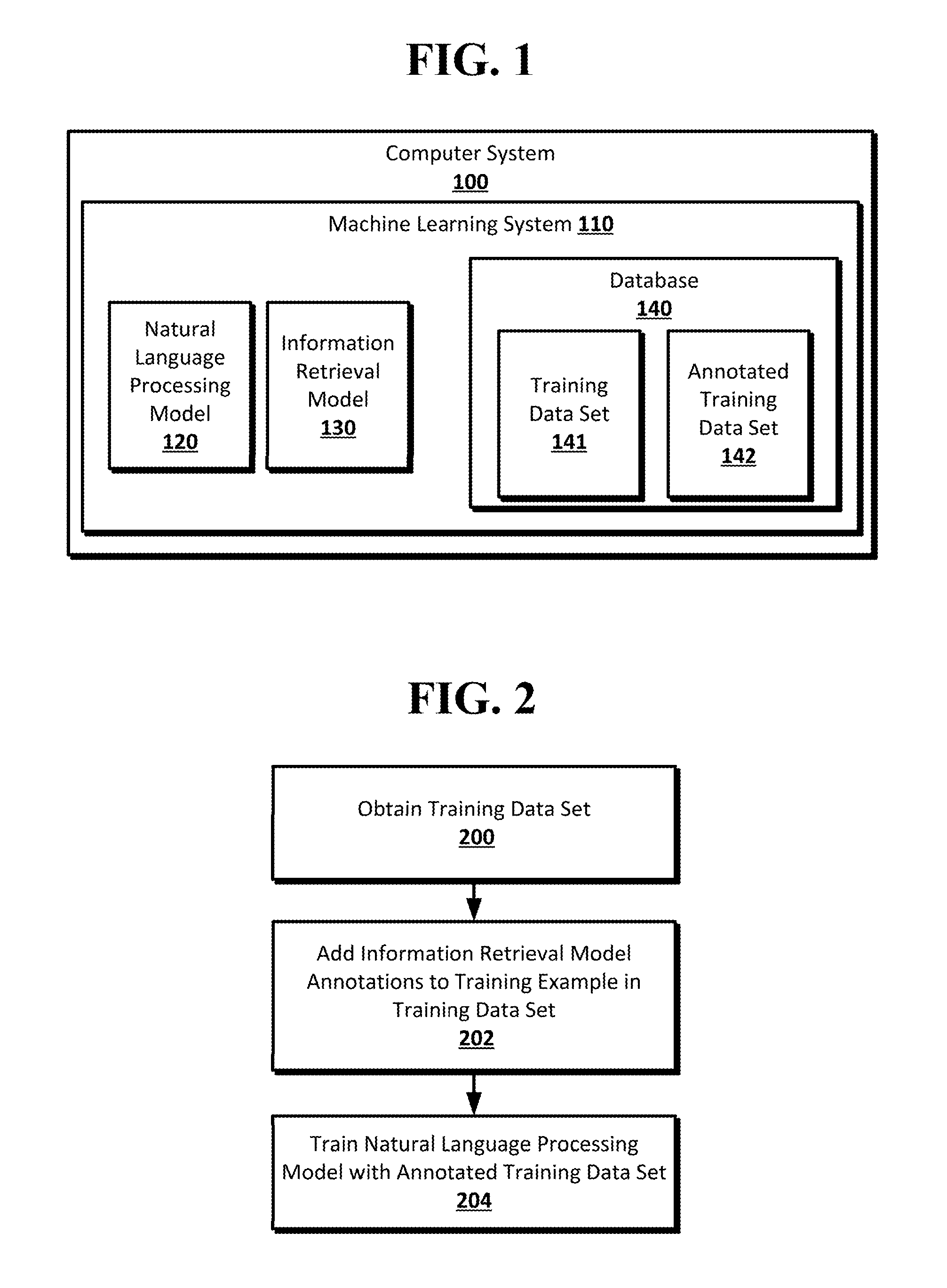Training a natural language processing model with information retrieval model annotations
information retrieval technology, applied in the field of training a natural language processing model with information retrieval model annotations, can solve the problems of missing context, short search queries, and grammatically unsound, and the natural language processing model may have difficulty identifying the part of the speech of words,
- Summary
- Abstract
- Description
- Claims
- Application Information
AI Technical Summary
Benefits of technology
Problems solved by technology
Method used
Image
Examples
Embodiment Construction
[0018]It may be desirable to train a natural language processing model to make better predictions on input from less-well behaved domains, such as, for example, search queries and potential search results such as web documents. Information retrieval models may be used in place of natural language processing models in responding to search queries. The information retrieval models may annotate search queries with information that may be used in the retrieval of information relevant to the search query. The information retrieval model annotations may relate various part of the text of search queries to, for example, a knowledge graph, a concept graph model, and an entity repository, and identify parts of the text as multi-word expressions, phrases, and proper names. As described herein, these information retrieval model annotations may be used to assist in the training of a natural language processing model. For example, the natural language processing model may have difficulty disambi...
PUM
 Login to View More
Login to View More Abstract
Description
Claims
Application Information
 Login to View More
Login to View More - R&D
- Intellectual Property
- Life Sciences
- Materials
- Tech Scout
- Unparalleled Data Quality
- Higher Quality Content
- 60% Fewer Hallucinations
Browse by: Latest US Patents, China's latest patents, Technical Efficacy Thesaurus, Application Domain, Technology Topic, Popular Technical Reports.
© 2025 PatSnap. All rights reserved.Legal|Privacy policy|Modern Slavery Act Transparency Statement|Sitemap|About US| Contact US: help@patsnap.com



